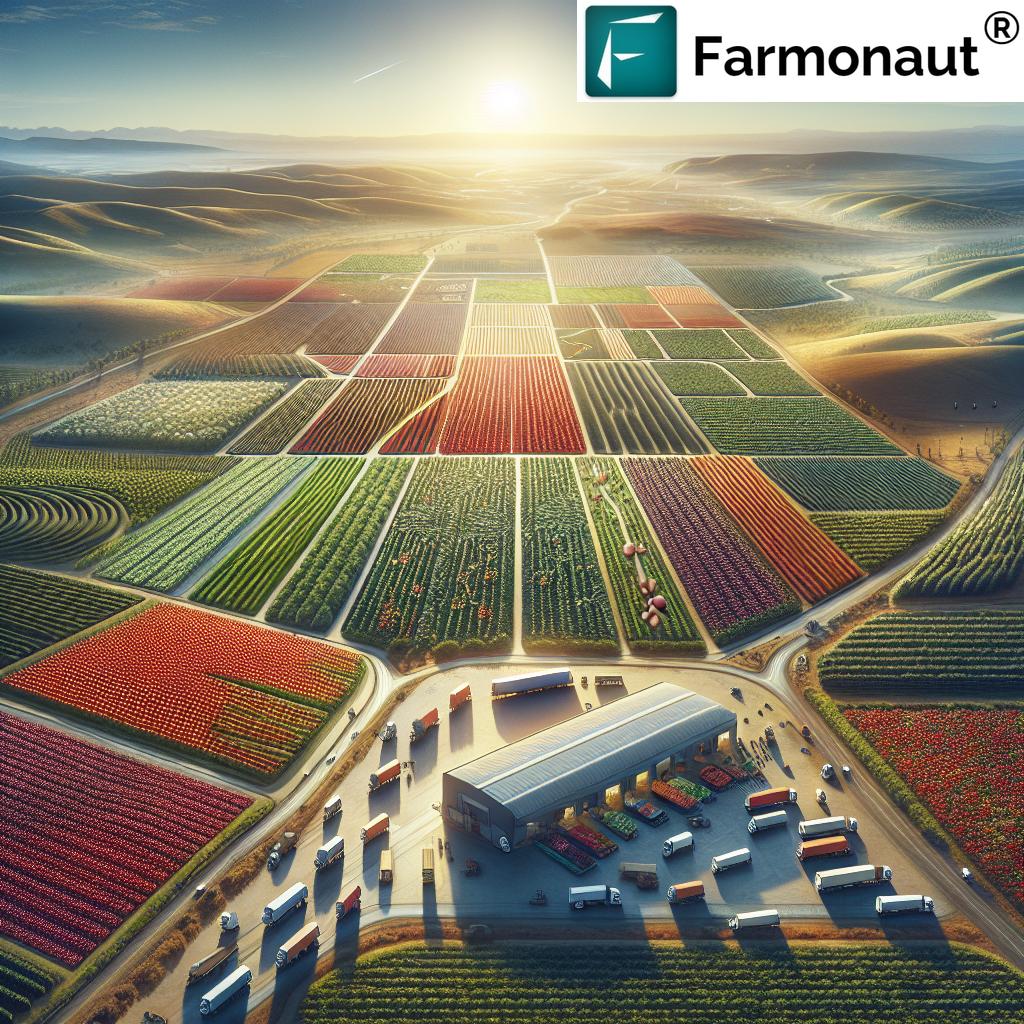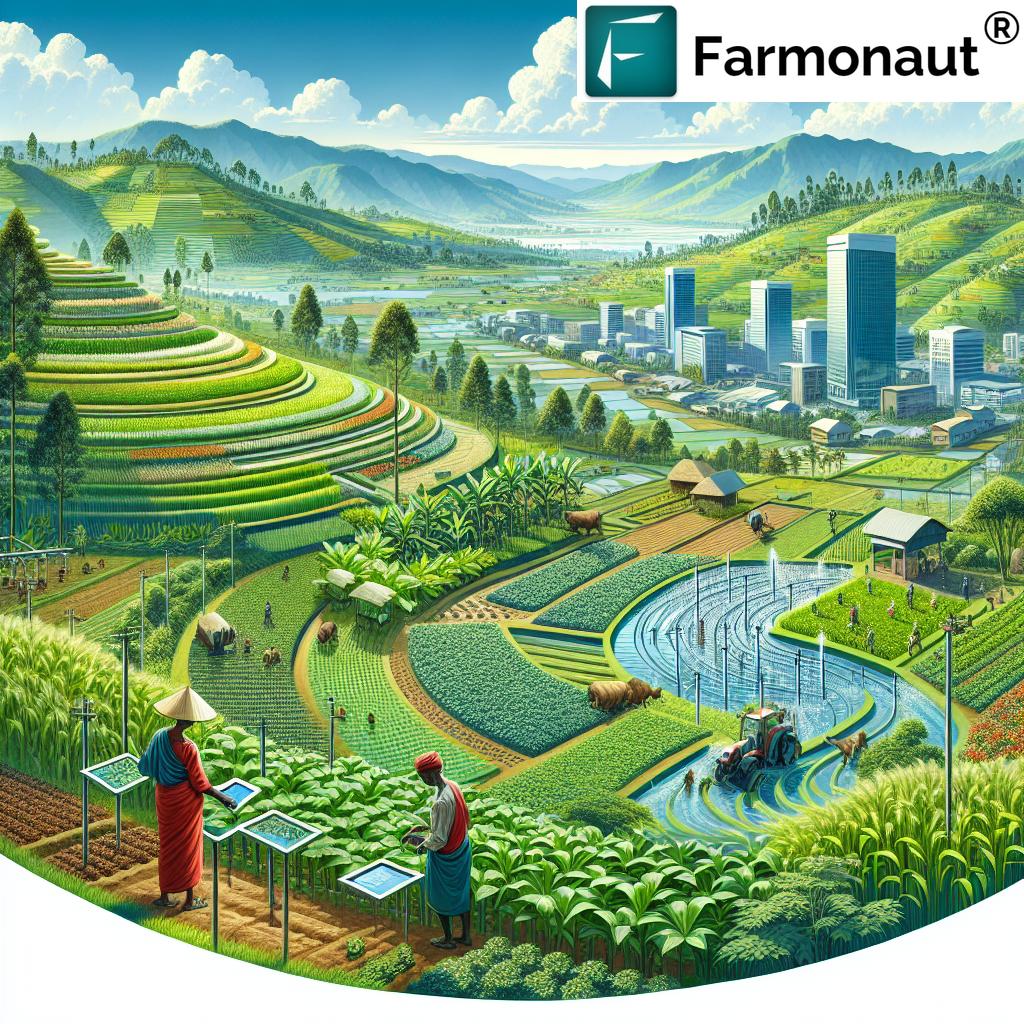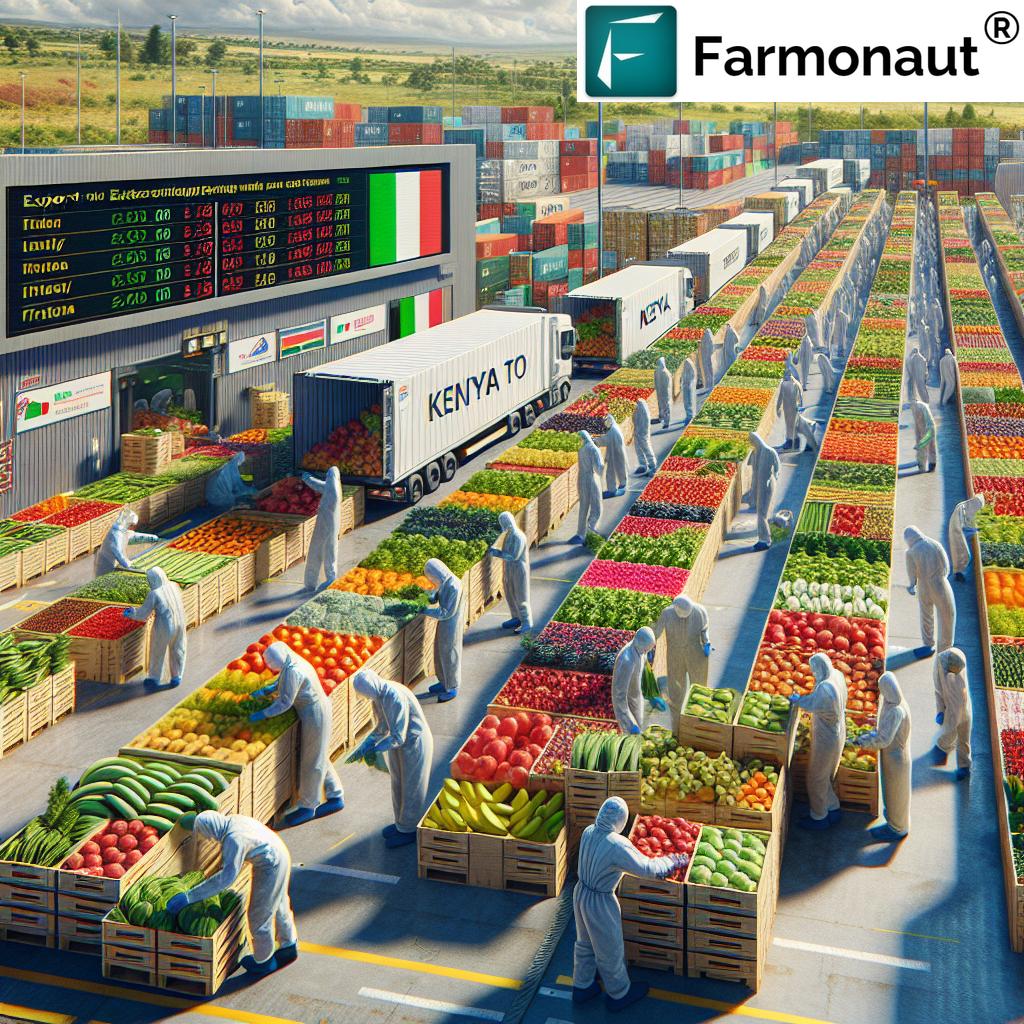Dry Season Rice Farming in Nigeria: Top 2025 Innovations
” Nigeria’s dry season rice yields can increase by up to 40% with advanced irrigation and improved agronomic practices. ”
Table of Contents
- Summary: Opportunities and Challenges in 2025
- Understanding Dry Season Rice Farming in Nigeria
- Significance of Dry Season Rice Farming in Nigeria
- Top Innovations and Advances in Dry Season Farming for 2025
- Farmonaut’s Role: Satellite Technology for Dry Season Rice Farming
- Comparative Innovation Impact Table
- Major Challenges in Dry Season Rice Farming for 2025
- Best Management Strategies and the Potential for 2025
- Future Outlook and Recommendations for 2025 and Beyond
- FAQ: Dry Season Rice Farming in Nigeria
- Farmonaut Platform Subscription
Summary: Opportunities and Challenges in 2025
Agriculture remains the backbone of Nigeria’s economy, employing over 30% of the population and significantly contributing to GDP and food security. Amidst this, dry season rice farming in Nigeria is rapidly gaining prominence as a crucial strategy that seeks to enhance rice production, stabilize food supply, and bolster farmers’ incomes. This innovation is vital in 2025, with climate variability becoming more pronounced and rice demand incessantly rising.
Dry season farming offers remarkable opportunities—multiple cropping cycles, controlled pest and disease management, and more efficient agronomic practices. However, it also presents substantial challenges such as water scarcity, input costs, environmental risks, and infrastructure gaps. This comprehensive guide explores how dry season rice farming in Nigeria leverages technology, particularly in irrigation and agronomic advances, to boost production, confront 2025’s pressing challenges, and uncover actionable recommendations that can help secure Nigeria’s food future.
Understanding Dry Season Rice Farming in Nigeria
What is Dry Season Rice Farming?
Dry season rice farming refers to cultivating rice crops during the dry months—typically from October/November to April/May—in contrast to rainfed or wet season rice farming which predominates in the rainy months. During this season of farming, rainfall is extremely scarce, and irrigation systems become absolutely essential to maintain adequate water supply for optimal rice production.
This practice hinges on a shift from reliance on rain-fed farming to controlled irrigation schemes. The main advantages of dry season rice cultivation are:
- Lower pest and disease prevalence due to drier environmental conditions
- Controlled water management offers precision over rice crop water needs and reduces water wastage
- Multiple cropping cycles per year allow farmers to achieve higher overall yields, stabilizing food supply and improving incomes
- Improved agronomic practices as farmers can time their farming activities better, avoiding the uncertainties of unpredictable rainfall and weather
Underlining these benefits is the need for robust planning and reliable infrastructure to ensure that dry season rice farming in Nigeria is both feasible and profitable for a growing number of farmers.
Significance of Dry Season Rice Farming in Nigeria
Meeting the Demand of Africa’s Largest Rice Consumer
Nigeria is Africa’s largest consumer of rice. The gap between domestic production and ever-increasing consumption—a gap that is often filled through heavy rice imports—poses a major food security and economic challenge. Dry season farming directly addresses this by increasing production cycles per year, ensuring that rice is available year-round.
In key states like Kano, Kebbi, Niger, and Cross River, irrigation schemes have been developed to support farmers. These states harness advanced mechanized technologies (such as drip and sprinkler irrigation systems) to maximize output, reduce risks associated with weather uncertainties, and boost overall yields.
Key benefits to Nigeria’s national food security and economy include:
- Reduces import dependency and costly rice import bills
- Stabilizes rural incomes by boosting dry season employment and revenue for farmers
- Increases food availability, reducing post-harvest losses often caused by unpredictable weather during the wet season
- Supports the government’s agricultural transformation agenda, aiming for self-sufficiency and improved food sovereignty
Such developments are fuelled by expanded government and private sector investments in critical infrastructure—making dry season rice farming in Nigeria more accessible for both smallholder and large-scale farmers.
Top Innovations and Advances Powering Dry Season Rice Farming in Nigeria for 2025
Continuous technological advances and agronomic improvements are at the heart of the ongoing transformation in dry season rice farming. Below, we examine the most influential trends and innovations for 2025 that are shaping rice farming strategies in Nigeria.
1. Advanced Irrigation Technologies
-
Drip Irrigation and Sprinkler Systems:
These efficient irrigation technologies minimize water loss and allow precise delivery to rice crops, drastically reducing water and energy costs. -
Solar-Powered Irrigation:
Leveraging renewable energy sources, these systems offer reliable water supply in remote areas, overcoming the challenge of erratic power grids. -
Remote Irrigation Control:
Smart systems utilizing sensors and AI enable farmers to automate water delivery, improving both labor efficiency and yield.
2. Improved Seed Varieties for Enhanced Yield
-
Drought-Tolerant and Early Maturing Seeds:
Biotechnology and breeding programs in Nigeria have produced seeds that thrive in dry conditions and complete their life cycle rapidly. -
Multiple Cropping Varieties:
Varieties bred for repeat harvests within a year help farmers maximize production per unit land and time. -
Disease-Resistant Strains:
Reduced dependency on pesticides and improved pest management support sustainable rice cultivation.
3. Mechanization and Precision Agriculture Technologies
-
Mechanized Land Preparation and Harvesting:
Modern tractors, tillers, and harvesters increase efficiency, reduce drudgery, and free up labor for other productive activities. -
Precision Tools:
GPS-guided equipment and digital agronomy platforms improve seed placement, water usage, and fertilizer application, maximizing resource use. -
Satellite Crop Monitoring:
Remote sensing tools (see section below) deliver real-time data on crop health, pest presence, and water needs, alerting farmers to take action promptly.
4. Integrated Agronomic and Water Management Practices
- Alternate Wetting and Drying (AWD): Strategic irrigation practice to optimize water management while preventing waterlogging and soil salinity.
- Integrated Pest Management (IPM): Applies a combination of biological, physical, and chemical control methods to minimize pest and disease damage while promoting environmental sustainability.
- Precision Fertilization: Data-driven fertilizer application minimizes wastage, lowers costs, and boosts yields.
5. Climate Risk Monitoring and Digital Advisory Platforms
-
Weather Forecasting & Early Warning Systems:
Advanced platforms deliver detailed, location-specific forecasts to help plan farming seasons and anticipate climate variability-related disruptions. -
AI-Powered Agronomic Advice:
Digital tools bring customized recommendations to the farmer’s smartphone, aiding in evidence-based decision-making to manage risks and maximize productivity.
Farmonaut’s Role: Satellite Technology in Dry Season Rice Farming in Nigeria
As technology continues to transform agriculture globally—including dry season rice farming in Nigeria—satellite-driven solutions stand out for their power to address long-standing challenges regarding management, efficient input use, and sustainability. At Farmonaut, we leverage a unique blend of satellite imagery, AI, blockchain, and remote sensing to deliver actionable insights for Nigerian rice farmers and the broader agricultural sector.
- Satellite-Based Monitoring: With multispectral imagery, we help farmers monitor crop health, water stress, and nutrient deficiencies during dry season farming. Satellite-enabled NDVI (Normalized Difference Vegetation Index) and NDWI (Normalized Difference Water Index) maps provide a bird’s-eye view of crop performance and soil moisture dynamics throughout the farming season, offering vital support for data-driven decision-making in Nigeria’s rice belts.
- AI-Driven Advisory: Our Jeevn AI engine delivers customized advisory on irrigation scheduling, fertilization, and disease management based on satellite observations and weather forecasts, empowering farmers to maximize yields and adopt environmentally sustainable practices during the dry season.
- Blockchain-Based Traceability: Blockchain integration through our product traceability platform enhances transparency and credibility in supply chains, allowing Nigerian rice to command premium markets—crucial amid growing concerns over food safety and quality assurance.
- Resource and Fleet Management: Tools such as our fleet management solution enable large-scale farms in Kano, Kebbi, Niger, Cross River, and elsewhere to make smarter decisions about machinery allocation, fuel efficiency, and logistics.
- Environmental Impact Monitoring: Our carbon footprinting module lets farms and agribusinesses monitor emissions and reduce their environmental impact—critical for sustainable, climate-resilient agriculture in Nigeria.
- Access to Financing: Banks and insurers can use our crop loan and insurance module for satellite-based verification, reducing fraud and improving smallholder access to vital working capital during the intensive dry season.
All these solutions are available through our Android, iOS, and web platforms, as well as APIs and integrations suitable for partners across the agricultural value chain.
Get started with satellite-driven dry season rice farming now:
Developers and agribusinesses: Access our powerful APIs for integration:
API: https://sat.farmonaut.com/api
Docs: API Developer Documentation
” Over 60% of Nigerian dry season rice farmers plan to adopt new technologies by 2025 to boost productivity. ”
Comparative Innovation Impact Table: 2025 Technologies in Dry Season Rice Farming in Nigeria
| Innovation | Description | Estimated Cost Savings (%) | Estimated Yield Increase (%) | Adoption Level (Nigeria) | Implementation Challenge |
|---|---|---|---|---|---|
| Drip Irrigation | Precision water delivery system for minimizing losses and optimizing crop hydration. | 25–40 | 20–35 | Medium | Medium |
| Solar-Powered Pumps | Renewable energy sourced water pumps replacing diesel for irrigation. | 15–30 | 10–20 | Medium | Medium |
| Drought-Resistant Seed Varieties | Improved genetics for shorter crop duration and resilience to water stress. | 10–15 | 20–30 | High | Low |
| Remote Sensing (Satellite/Aerial) | Satellite images and AI analyses for monitoring field health, water, and soil. | 20–25 | 15–25 | Medium | Medium |
| Alternate Wetting and Drying (AWD) | Strategic on-off irrigations to reduce water and energy usage. | 18–28 | 8–14 | Low | Medium |
| AI-Powered Digital Advisory | Instant recommendations on water, fertilizer, and pest management driven by satellite and field data. | 12–18 | 12–18 | Medium | Low |
| Mechanized Farming Tools | Tractors, combine harvesters, and planters to increase speed and reduce labor costs. | 22–36 | 16–22 | Medium | Medium |
Major Challenges Facing Dry Season Rice Farming in Nigeria for 2025
Despite the impressive opportunities presented by dry season rice farming in Nigeria, there exist substantial challenges that stakeholders must address to unlock the sector’s full potential.
Water Scarcity and Infrastructure Pressure
While irrigation is fundamental to dry season farming, water supply can become unreliable due to:
- Seasonal fluctuations in river and groundwater levels
- Competing demands from domestic and industrial sectors
- Poorly maintained or outdated irrigation infrastructure
High Input Costs & Access to Finance
Essential seeds, fertilizers, pesticides, and irrigation equipment remain expensive—putting smallholder farmers at a disadvantage. Moreover, limited access to affordable credit constrains optimal investment and scaling.
Energy Supply and Mechanization Constraints
Inconsistent energy supply—due to unreliable national power grids, high diesel/gasoline prices, or a lack of solar installations—can disrupt irrigation systems or mechanized operations.
Extension Services & Knowledge Gaps
Insufficient investment in agricultural extension services reduces the spread and adoption of improved practices necessary for high productivity and sustainability.
Environmental Concerns and Land Degradation
Potential environmental downsides—like soil salinization, chemical runoff, or waterlogging—must be proactively managed to safeguard land productivity for future farming seasons.
Climate Variability & Weather Uncertainties
Climate change continues to cause unpredictable rainfall patterns, higher temperatures, and shifting seasonal windows—all increasing the risk to Nigerian rice farmers if risk management and sustainable practices are not adopted.
Best Management Strategies and the Potential for 2025
Tackling these challenges requires deploying integrated strategies across the season of farming, involving technology, knowledge dissemination, and sustainable resource management.
1. Best Practices in Irrigation and Crop Management
- Efficient Irrigation Scheduling: Use satellite-based and sensor-driven scheduling to avoid overirrigation and water wastage. Integrate tools (like Farmonaut’s NDWI/NDVI maps) or locally developed monitoring systems.
- Crop Rotation and Multi-Cropping: Diversify rice varieties and rotate with legumes or vegetables within the farming season to improve soil health and reduce pest/disease prevalence.
- Alternate Wetting and Drying (AWD): Alternate irrigation cycles to reduce water and power consumption while maintaining yield potential.
- Integrated Pest Management (IPM): Combine biological, cultural, and chemical methods to reduce pest resistance and minimize environmental risks.
2. Technology-Driven Monitoring and Decision Support
- Remote Sensing and Satellite Imagery: These technologies support early detection of water stress, pest outbreaks, and nutrient deficiencies. Farmonaut’s large scale farm management platform makes this data available on desktop and mobile, enabling better resource planning and risk reduction.
- Digital Extension and Advisory Systems: Combine traditional extension with digital and AI-powered platforms for customized advice.
3. Enhancing Farmer Access to Credit and Inputs
- Satellite-Enabled Verification for Finance: Enable more credit and crop insurance access to Nigerian dry season rice farmers, using satellite data to assess risk and verify productivity (see Farmonaut’s crop loan and insurance solution).
- Input Subsidy Programmes: Leverage government and private sector to deliver subsidized, quality seeds/fertilizers to smallholders at scale.
4. Environmental Risk Mitigation
- Regular Soil Testing and Salinity Checks: Avoid buildup of salts through strategic irrigation and leaching practices.
- Adoption of Sustainable Technologies: Solar pumps, efficient irrigation systems, and AI-based environmental monitoring to reduce emissions and chemical runoff (see Farmonaut’s carbon footprinting module).
5. Capacity Building and Upskilling Extension Agents
- Farmer Field Schools and Digital Literacy: Combine on-the-ground agronomy with digital skills for adoption and effective scaling of new innovations.
- Strengthen Research–Extension Linkages: Use research outputs to directly inform extension services and curriculum.
Future Outlook and Recommendations for Dry Season Rice Farming in Nigeria, 2025 and Beyond
Nigerian agriculture stands at a turning point, where dry season rice farming is not just a necessity but an opportunity for sustainable development. To fully realize its potential in 2025, we recommend a multi-stakeholder approach that aligns government policy, private sector investments, research, and farmer organizations for systemic change.
-
Expand and Modernize Irrigation Infrastructure:
- Prioritize core rice states like Kano, Kebbi, Niger, and Cross River for new investments.
- Incorporate climate-resilient, water-saving systems—drip, sprinkler, and solar-powered pumps.
- Rehabilitate old canals and promote smallholder-accessible water pumps/wells.
-
Enable Affordable Credit and Input Subsidies:
- Target rural finance and government-backed input supply for smallholders during critical months.
- Leverage satellite-verification platforms (such as Farmonaut’s crop loan insurance tools) for eligibility assessment and fraud reduction.
-
Support Intensified Extension and Digital Advisory Services:
- Government and private sector should invest in next-gen agricultural extension using digital/AI-based channels for real-time agronomic advice and monitoring.
- Upskill agents and encourage mobile-first approaches in dry season farming.
-
Encourage Renewable Energy-Based Irrigation:
- Scale up solar-powered pumping, targeting regions not served by stable grid electricity, to ensure reliable irrigation.
-
Promote Sustainable Land and Water Management:
- Incentivize adoption of AWD, precision fertilization, and IPM for resilient productivity and environmental protection.
Conclusion:
Dry season rice farming in Nigeria in 2025 will define the nation’s food security trajectory, reshape rural economies, and prove the resilience of Nigerian agriculture amidst climate and market unpredictability. Harnessing technology, investments, and proven agronomic innovations is the next frontier.
FAQ: Dry Season Rice Farming in Nigeria
Q: What distinguishes dry season rice farming from wet season rice farming?
Dry season rice farming refers to the cultivation of rice outside the rainy season (usually November–April) using irrigation, as opposed to relying on rainfall during the wet farming season.
Q: Why is dry season rice farming crucial for Nigeria’s food security?
Nigeria is Africa’s largest rice consumer, and dry season farming enables multiple production cycles to meet high demand, reduce import dependency, and stabilize rice availability throughout the year.
Q: What are the major challenges of dry season rice farming in Nigeria?
Major challenges include unreliable water supply, high input costs, limited access to credit, insufficient extension services, and environmental issues like soil salinity and waterlogging.
Q: How does technology improve dry season rice farming?
Technologies like efficient irrigation systems, improved seed varieties, mechanized farming, AI-powered advisory, and satellite crop monitoring significantly boost yields, reduce costs, and improve environmental sustainability.
Q: What is the outlook for dry season rice farming in 2025?
Continued investment in infrastructure, technology, extension services, and sustainable practices is set to boost production, ensure food security, and improve farmer livelihoods despite persistent challenges.
Get Access to Farmonaut Satellite-Driven Agriculture Solutions
Unlock the full benefits of cutting-edge satellite monitoring, AI advisory, blockchain traceability, and resource management for your dry season rice farming operations in Nigeria. Empower your journey towards higher productivity, cost efficiency, and sustainability.
Discover more about how Farmonaut supports Nigeria’s transition to resilient, technology-powered agriculture on our official website.














